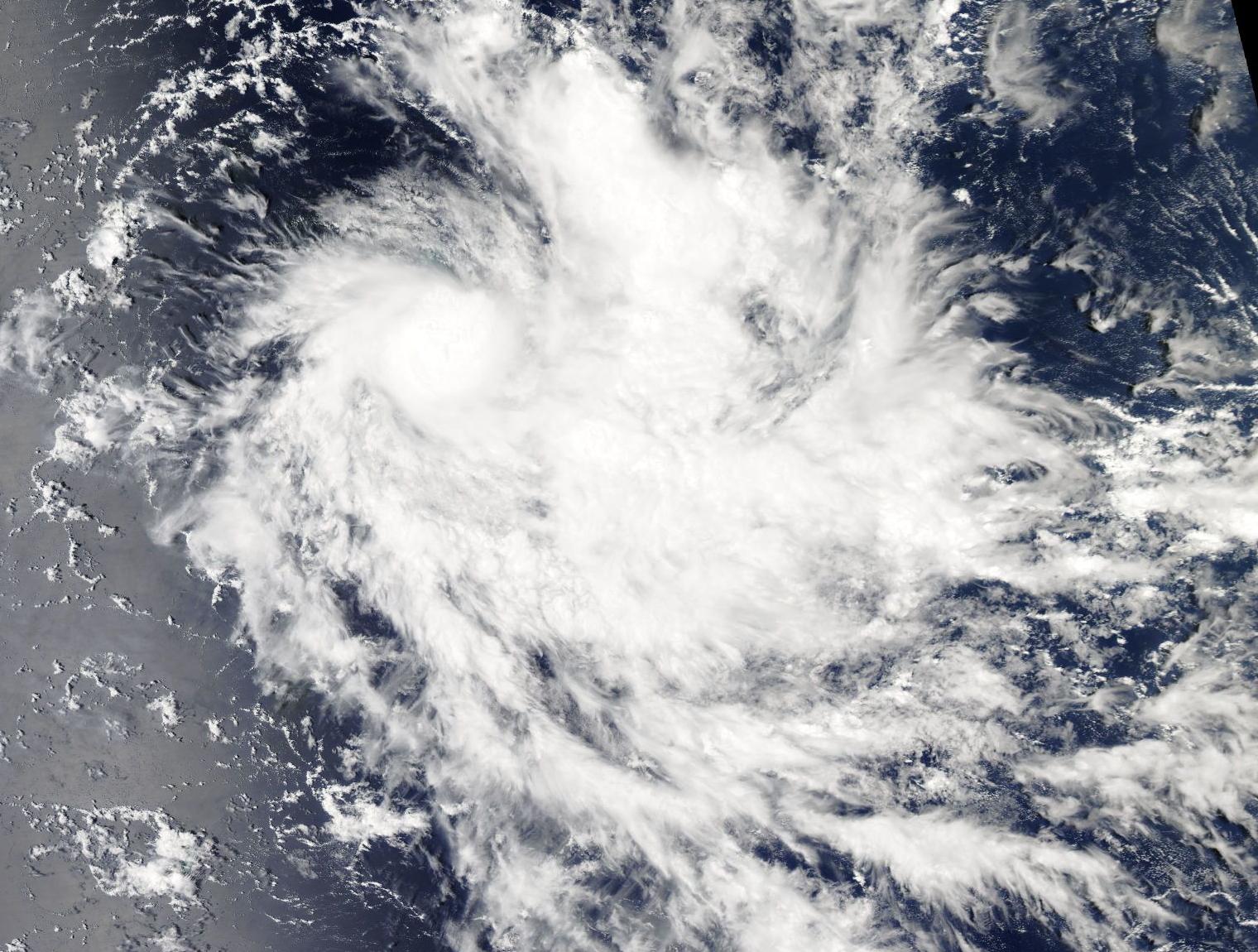Dec. 06, 2019 – NASA Finds Tropical Cyclone Ambali Now Past its Peak
Tropical Cyclone Ambali reached its peak early on Dec. 6 and has been quickly weakening. NASA’s Aqua satellite captured a visible image of the Southern Indian Ocean storm after it weakened from its powerful peak intensity.

At 4 a.m. EST (0900 UTC) on Dec. 6 Ambali was a Category 4 hurricane equivalent on the Saffir-Simpson wind scale with maximum sustained winds near 135 knots (155 mph/250 kph). By 10 a.m. EST (1500 UTC) on Dec. 6, those winds had dropped by 45 knots (52 mph/83 kph).
It was after that drop in sustained wind speed on Dec. 6, 2019, the Moderate Imaging Spectroradiometer or MODIS instrument that flies aboard NASA’s Aqua satellite provided a visible image of Ambali. The eye of the storm was difficult to pinpoint in the MODIS image, which indicated a rapid weakening from its previous status. Animated enhanced infrared satellite imagery shows a rapidly decaying system with cycling convection wrapping into an embedded low-level circulation center.
At 10 a.m. EST (1500 UTC) on Dec. 6, the Joint Typhoon Warning Center or JTWC noted that Tropical Cyclone Ambali was located near 11.7 degrees south latitude and 62.1 degrees east longitude. That is about 583 nautical miles north-northeast of Port Louis, Mauritius. Maximum sustained winds 90 knots (104 mph/167 kph). The storm is on weakening trend now that will lead to its demise by Dec. 10.
Forecasters at the JTWC Ambali will move south-southwest and appears to have reached peak intensity. The storm is expected to dissipate after three days.
NASA’s Aqua satellite is one in a fleet of NASA satellites that provide data for hurricane research.
Tropical cyclones are the most powerful weather event on Earth. NASA’s expertise in space and scientific exploration contributes to essential services provided to the American people by other federal agencies, such as hurricane weather forecasting.
